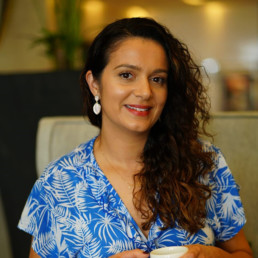
Written by Cas Germain
Primary School Teacher living and teaching in the UAE. She has a Masters in Gender Studies in the Middle East, is a qualified SENCo and a certified Life Coach.
Before we begin I wish to break down the terminologies I’ll be using within this article to ensure we are all speaking and understanding the same language.
Ethnography:
“The scientific description of peoples and cultures with their customs, habits, and mutual differences.” *
Bias:
“Biases may be held by an individual, group, or institution and can have negative or positive consequences.” **
Inclusive practice:
“Inclusive practice is a teaching approach that recognises the differences between students and uses this to ensure that all students can access educational content and participate fully in their learning.” ***
As educators we all strive to ensure all of our children are getting the best out of the curriculum, however, more often than not there are some crucial indicators and factors which are overlooked.
We humans tend to gravitate towards what’s familiar to us. For some people it can be having a cup of tea when travelling abroad, or gravitating towards people who like the same hobbies as you. It’s part of our human DNA, which is to create meaningful connections, we’re hardwired for it.
When in the classroom and creating a fully inclusive environment for learning, I wish to provide some useful strategies on the importance of checking our bias to ensure all children are represented.
Why is this important?
If you’re teacher training took place in the British curriculum, it’s part of our Teaching Standards: Personal and Professional Conduct. “Showing tolerance of and respect for the rights of others.” ****
When students are taught about one another’s cultures and experiences, it creates a world of understanding and positive relationships.
Students become more open minded and respectful of their peers’ values and identities, creating the ability to connect and build rapport later on, not only in the academic careers but within their chosen professions.
Confidence is created within the school environment and therefore enhancing the learning experience for all, allowing for less likeliness of prejudice to occur later on in life, as teaching with ethnography in mind, provides a safe space to express oneself and celebrates one’s identity.
Children of all nationalities, backgrounds feel a sense of belonging, and are less likely to be influenced by organisations that entice vulnerable ethnic groups.
What does Ethnography look like within the school environment?
As educators we can use simple approaches to ensure pupils feel included, supported and valued.
The basis of all human connection is where we feel, seen, heard, valued and respected. This can be done across the board regardless of race, ethnicity or gender.
Examples can be:
- Creating rapport: Greeting and addressing pupils and colleagues by their names. “A person’s name is to him or her the sweetest and most important sound in any language.” (D. Carnegie) Asking them how their weekend was, or what they enjoy? By speaking about non-school related topics and leaning into the student’s world, creates a sense of trust and positive relationships.
- Representing races and genders on lesson plans: Look at the demographic and ethnography of children in your classroom. For example, if you have a large Caribbean demographic, include pictures and examples of successful people from that area of the world within lesson plans, during your weekly planning.
- Leadership and hiring: When hiring candidates, do you tend to hire male leaders and female teachers? Think about how this reflects and seems from a child’s perspective. If young girls only see men as leading and women as teaching, does this represent their opportunities of growth and career progression later on? Do you have a variety of genders and nationalities within your workforce, that reflect the children in your school?
- Share local and global leaders from all areas of their world and their stories. Using the demographics of students in your class or school, use these example as assembly topics or include them within your slides.
- Celebrate cultural days: E.g Diwali, Eid, Christmas. Choose children to talk about their culture. For KS2 and secondary students, can they create an assembly for the year group/school? For primary children, allow them to tell their class about their culture and how they celebrate their festivals. Allow children to ask questions, and invite parents in (via Zoom) for a Q & A with the children.
The best thing we can do as educators, is make our students feel welcome, seen, heard and valued. This is the basis of all human relationships.
References:
- (Oxford Languages,2021)
- (https://diversity.ucsf.edu/resources/unconscious-bias,2021)
- https://www.highspeedtraining.co.uk/
- https://assets.publishing.service.gov.uk/government/uploads/system/uploads/attachment_data/file/665522/Teachers_standard_information.pdf

